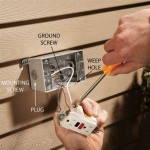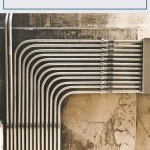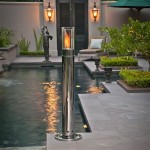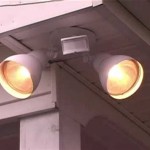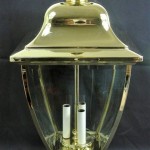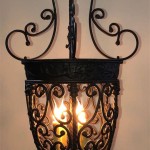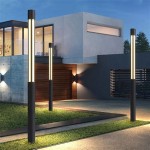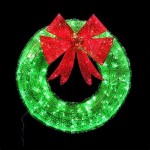Outdoor Fire Alarm Strobe Lights: Ensuring Visibility and Safety
Outdoor fire alarm strobe lights play a crucial role in life safety systems, providing a highly visible alert in the event of a fire emergency. These devices utilize intense flashes of light to warn occupants of potential danger, particularly those with hearing impairments. Their robust construction allows them to withstand harsh weather conditions, making them suitable for a variety of outdoor applications.
Key Considerations for Selecting Outdoor Strobe Lights
Choosing the right outdoor strobe light requires careful consideration of several factors. The intensity of the strobe, measured in candela, is paramount. Higher candela ratings equate to greater visibility over longer distances, crucial for large outdoor areas. Additionally, the color of the strobe light plays a significant role in visibility and compliance with regulations. Red is the standard color for fire alarm signals, but clear or amber lenses are also available for specific applications.
Environmental factors also influence strobe light selection. Outdoor models must be weatherproof and resistant to temperature extremes, moisture, and UV radiation. The Ingress Protection (IP) rating system provides a standardized measure of a device's resistance to dust and water. A higher IP rating signifies greater protection. Selecting a strobe light with the appropriate IP rating is vital for ensuring long-term reliability and performance in outdoor environments.
Synchronization capabilities are another important consideration. In larger facilities or interconnected buildings, synchronizing the flashing of multiple strobe lights can prevent seizures in individuals with photosensitive epilepsy. Synchronized flashing ensures that all strobes flash simultaneously, reducing the risk of adverse reactions.
Compliance with Regulations and Standards
Outdoor fire alarm strobe lights must adhere to strict regulations and standards to guarantee their effectiveness and safety. The Americans with Disabilities Act (ADA) mandates specific requirements for strobe light intensity and placement to ensure accessibility for individuals with disabilities. Local fire codes and building codes may also dictate specific requirements for strobe light installation and operation.
The National Fire Protection Association (NFPA) provides guidelines and standards for fire alarm systems, including the use of strobe lights. NFPA 72, the National Fire Alarm and Signaling Code, outlines specific requirements for strobe light visibility, placement, and synchronization. Compliance with these regulations is essential for ensuring the safety of occupants and meeting legal requirements.
UL (Underwriters Laboratories) listing provides third-party verification that a strobe light meets specific safety and performance standards. Choosing UL-listed strobe lights assures compliance with industry best practices and provides assurance of product quality and reliability.
Installation and Maintenance of Outdoor Strobe Lights
Proper installation and maintenance are crucial for the long-term effectiveness of outdoor fire alarm strobe lights. Strobe lights should be mounted in strategic locations to ensure maximum visibility from all angles and distances. The mounting height, viewing angle, and potential obstructions should be carefully considered during installation.
Regular maintenance is essential to ensure the continued reliability of outdoor strobe lights. Periodic inspections should be conducted to check for any signs of damage, corrosion, or malfunction. Cleaning the lenses and checking the wiring connections are also crucial maintenance tasks. A well-maintained strobe light system is more likely to function correctly in an emergency.
Wiring and power supply options vary depending on the specific strobe light model and the overall fire alarm system design. Some strobe lights operate on low-voltage DC power, while others require connection to AC power sources. Understanding the power requirements and wiring configurations is essential for proper installation and operation.
Different types of mounting options are available for outdoor strobe lights, including surface mounting, wall mounting, and ceiling mounting. The chosen mounting method should be appropriate for the specific location and ensure secure attachment of the strobe light. The mounting hardware should be weather-resistant and capable of withstanding the weight of the device.
Choosing the appropriate outdoor fire alarm strobe light involves understanding the specific needs of the environment, adhering to relevant regulations, and employing proper installation and maintenance procedures. This careful approach ensures the highest level of safety and warning effectiveness for occupants in the event of a fire.

Fire Alarm Strobe

Abs Agni Hooter Strobe For Offices

Wall Mount Horns Strobes Potter Electric

Conventional Audio Visual Alarm 12v Fire Strobe Lights China Siren Sound Light Made In Com

Dc12 24v Outdoor Indoor Flash Sound Horn Speaker Piezo Fire Alarm Strobe Siren China Made In Com

Notifier Outdoor Av Devices P2rhk 120 Fox Valley Fire Safety

Anti Intrusion 12v 24v Outdoor Strobe Siren For Alarm System China Sirena De Alarma Fire Made In Com

Abs Agni Hooter Strobe For Offices

Conventional Audio Visual Alarm 12v Fire Strobe Lights China Made In Com

Wheelock Outdoor Fire Alarm Horn Strobe Multitone Xenon Blue Light 24v Mtwpb 2475w Nr
